Everything you need to know about Tourmaline Gemstone
The hues of tourmaline can be attributed to a wide variety of factors. However, there is a consensus among experts that minute amounts of iron, and likely titanium, are responsible for the green and blue colours.
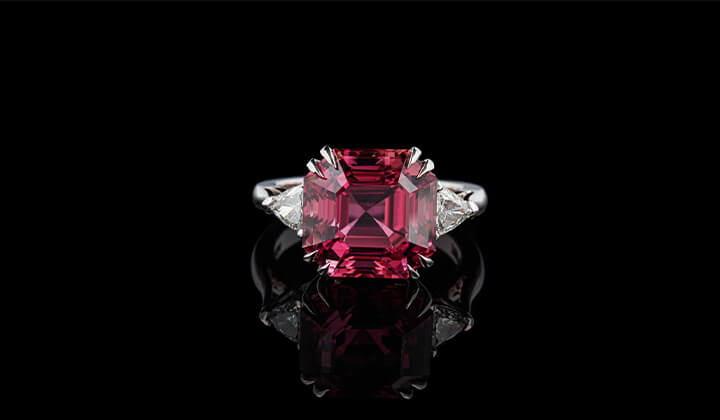
Manganese is responsible for the production of pinks and reds, and possibly yellows as well. The colour centres in some pink and yellow tourmalines may result from radiation, either naturally occurring or artificially produced in a laboratory.
Description
Tourmalines can be found in a dazzling array of hues across the spectrum. In addition, tourmaline gemstones possess one of the most extensive colour ranges of any gem species, as they can be found in varying tints of every colour.
The cat's-eye effect, also known as chatoyancy, can be seen in certain tourmalines. The eye in cat's-eye tourmalines is typically softer and more diffused than the eye in fine cat's-eye chrysoberyl.
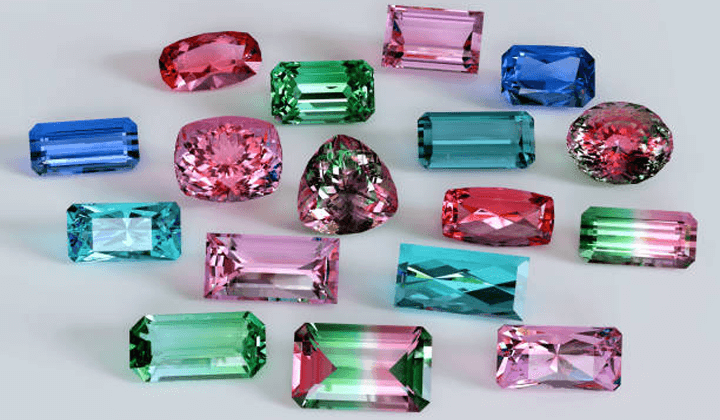
The most common colours for cat's-eye tourmaline gemstones are green, blue, and pink. It is because tourmaline gems have multiple inclusions that seem like thin tubes, and these inclusions generate the illusion.
As a result of the inclusions being significantly more extensive than those found in cat's-eye chrysoberyl, the chatoyancy is not nearly as pronounced. The chemical composition of tourmaline gems is what determines their colour and immediately affects their physical qualities.
It is also responsible for the tourmaline's properties. There is a group of closely related mineral species known as tourmalines. These minerals have the same crystal structure, but their chemical composition and physical characteristics are unique.
They contain a complicated mixture of additional elements such as sodium, lithium, calcium, magnesium, manganese, iron, chromium, vanadium, fluorine, and sometimes copper. Silicon, aluminium, and boron are present in both, but the other elements differ.
Gemologists identify the species of tourmaline gemstones by analyzing their physical characteristics and chemical makeup. Elbaite, Liddicoatite, Dravite, Uvite, and Schorl are the primary species of tourmaline gemstones that can be found.
The vast majority of gem tourmalines are Elbaites, minerals that are abundant in sodium, lithium, aluminium, and even, very infrequently, copper. They are found in pegmatites, which are uncommon types of igneous rocks that contain granite.
Pegmatites can often be found to have large amounts of unusual elements, many of which are necessary for the development of specific gem minerals.
Facts
| Absorption Spectrum | Birefringence | Crystallography |
| Lacks diagnostic value; spectra are often quite faint. A strong narrow band at 498 nm; nearly the entire absorption from blue to green at 640 nm. Lines at 458 and 451 nm, a large green band, and a red and pink spectrum. | Typically 0.020, but it can range from 0.006 to 0.080 depending on the species. It's important to remember that O-ray absorption is sometimes strong enough to plane-polarize light. Therefore, a refractometer will only show one line when completely absorbed. | Hexagonal (trigonal) (trigonal). Crystals are abundant; they can be lengthy and prismatic, strongly striated throughout their length, and end in various shapes and forms (including equant and acicular). |
| Birthstone | Cleavage | Colours |
| October | None | All |
| Etymology | Formula/ Chemistry | Luminescence |
| The Singhalese term turamali, from which the English word "tourmaline" is derived, means "stones of various colours." It was common to practise to mistake tourmalines for other jewels. The Austrian Carinthian region of Drave is the inspiration for the word "dravite." Schorl is the German mining name for waste rock. The Italian island of Elba inspired the name "Elbaite." The mineral buergerite was named after the eminent crystallographer and scientist Professor Martin J. Buerger. The previous director of the Gemological Institute of America, Richard T. Liddicoat, is honoured with naming a new mineral, liddicoatite. The word "chromdravite" refers to the mineral's chemical makeup. The Uva Province in Sri Lanka is the inspiration for Uvite's eponymous name. | Buergerite (fluor-buergerite): Na(Fe3+3)Al6(Si6O18)(BO3)3O3F Chromdravite: Na(Mg3)Cr3+6(Si6O18)(BO3)3(OH)3(OH) Dravite: Na(Mg3)Al6(Si6O18)(BO3)3(OH)3(OH,F) Elbaite: Na(Li1.5Al1.5)Al6(Si6O18)(BO3)3(OH)3(OH,F) Liddicoatite: Ca(Li2Al)Al6(Si6O18)(BO3)3(OH)3(OH,F) Povondraite: NaFe3+3(Mg2Fe3+4)(Si6O18)(BO3)3(OH)3O Schorl: Na(Fe2+3)Al6(Si6O18)(BO3)3(OH)3(OH,F) Tsilaisite: Na(Mn2+)3Al6(Si6O18)(BO3)3(OH)3(OH) Uvite: CaMg3(Al5Mg)(Si6O18)(BO3)3(OH)3(OH,F) |
Under ultraviolet light, most tourmalines are rather unresponsive. Stones with pink hues are either completely inactive or have very low levels of the colour red or violet. Inert, non-violent, and all other colours. In the southwest, stones can range from a pale blue to a deep blue (Newry, Maine). Gemstones from Tanzania (golden yellow, brown, and green stones) are vivid yellow in the SW, while pink stones from Brazil can seem blue or lavender in the region. |
| Dispersion | Enhancements | Fracture |
| 0.017 | Heating, irradiation, acid treatment (bleaching), plastic or epoxy fillers. | Conchoidal, Uneven |
| Fracture Lustre | Hardness/ Mohs Hardness | Heat Sensitivity |
| Vitreous | 7-7.5 | Some |
| Luminescence Present | Luminescence Type | Lustre |
| Yes | Fluorescent, UV-Short | Vitreous |
| Occurrence | Pleochroism | Varieties |
| Tourmaline can be found in crystalline schists, granites, granite pegmatites (particularly elbaite), gneisses, marbles, and other contact metamorphic rocks (especially dravite, Uvite). Some varieties of quartz contain tourmaline as an inclusion. | Moderate to strong, maybe two shades of body colour or two different colours. Single colours are always stronger down the C axis | Achroite, Chrome-Tourmaline, Dravite, Elbaite, Fluor-buergerite, Indicolite, Liddicoatite, Paraíba Tourmaline, Rossmanite, Rubellite, Schorl, Uvite, Verdelite, Watermelon Tourmaline |
| Mineral | Optic Sign | Optics |
| Tourmaline | Uniaxial - | Uniaxial (-) |
| Phenomena | Polish Lustre | Refractive Index |
| Chatoyancy, colour change, Usambara effect, iridescence, schiller (buergerite). | Vitreous | Varies by species, 1.603-1.820 |
| Specific Gravity | Transparency | Typical Treatments |
| 2.82-3.9. | Transparent to opaque | Bleaching, Fracture/Cavity Filling, Heat Treatment, Irradiation |
| Variety of | Wearability | |
| Best Known Gemstones | Very Good |
History
When a Spanish conquistador in Brazil in the 1500s wiped the dirt off a green tourmaline stone, he mistook the brilliant one for an emerald and brought it back to Spain.
His uncertainty persisted until the 1800s when scientists finally recognized tourmaline stones from a different mineral species. Even the stone's name, which originates from the Sinhalese word toramalli, which translates to "mixed gems," reflects the mystery surrounding the identity of the precious stone (a language of Sri Lanka).
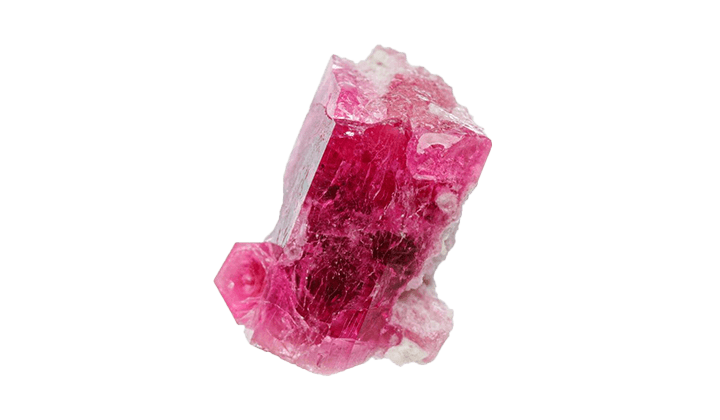
It is a name coined by Dutch traders to describe the iridescent, weathered pebbles that miners discovered in the gem gravels of Ceylon (now Sri Lanka). People have undoubtedly been using tourmaline as a gem for millennia.
However, before discovering modern mineralogy, they mistook it for another stone based on its colouring, such as ruby, sapphire, emerald, etc. 1892 was one of the earliest reports of tourmaline stones found in California.
Due to Tiffany gemologist George F. Kunz's work in the late 1800s, tourmaline stones earned its reputation as a gem native to the United States. He wrote of the tourmaline stone deposits found in Maine and California and lauded the stones that could be extracted from such deposits.
China was tourmaline's most significant market at the time, even though its origins are in the United States. The miners had become so reliant on Chinese trade by the time the Chinese government fell in 1912, which caused the tourmaline gems trade in the United States to fail.
Stone Sizes
Tourmalines weighing hundreds of carats each have been carved out of material from several regions. Crystals of exceptionally enormous size have been found in Maine and California, in addition to Brazil and Mozambique, which are known for producing some of the world's most large stones.
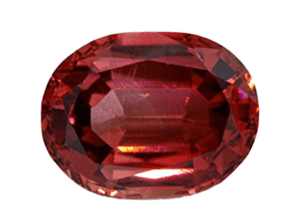
- Smithsonian Institution, located in Washington, District of Columbia: 246 (pink, faceted egg, California); 116.2, 100 (pink, California); 172.7, 124.8 (champagne colour, Mozambique); 122.9 (green, Mozambique); 117, 110 (green, Brazil); 110.8 (pink, Russia); 75 (rose-red. Brazil); 62.4 (pink, Brazil); 18.4 (pink, Maine); 103.8 (rose, Mozambique (yellow-green, Elba, Italy).
- Items from the Private Collection: 256 and 258.08 (green cat's eye) (green, Maine, enormous for locality).
Stone Care
Even for skilled gem cutters, tourmaline gems raw can be a complex material to work with. Gems of several hues typically have areas of weakness where the colours meet, although gems of all colour variations can have stress areas.
However, they become highly long-lasting stones after tourmalines have been cut and placed in jewellery. Due to tourmaline's Mohs hardness of 7 to 7.5, these gems are resistant to scratching from various daily contaminants, including dust from home.
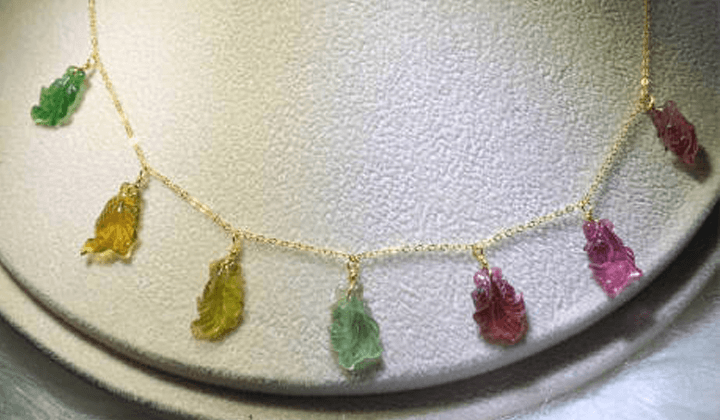
In addition, tourmaline gems are electrically conductive means that diamonds made from them will collect more dust than stones made from non-conductive materials; thus, this is very fortunate.
Therefore, you should clean them regularly. Using ultrasonic or steam cleaning methods on tourmalines is not recommended because they typically have multiple inclusions. Heat and vibrations can cause liquid inclusions to expand, breaking the stone apart.
Instead, a gentle brush, a little bit of light detergent, and some warm water should be used.
FAQs
What Kind of Colour-Changing Tourmalines Are There?
Extremely uncommon tourmalines exhibit a discernible colour shift from natural to artificial light. The Usambara effect is a form of colour variation that may be seen in certain tourmalines. This effect is caused by the lengths of the path that light takes when travelling through the stone.
What Is Meant by The Term "Tourmalinated Quartz"?
There have been reports of needle-like inclusions of black tourmaline crystals seen in some pure quartz stones. These pieces, also referred to as ''Tourmalinated Quartz,'' have the potential to be fascinating gemstones for jewellery and eye-catching display crystals.
What Types of Enhancements Do Tourmaline Gemstones Receive?
Tourmalines, on the other hand, can undergo a wide variety of improvements. These can readily improve the appearance and colour of a stone of lower grade and modify the stone's natural colour into something more appealing (and valuable).
- Heating will lighten blue and green stones, which are common, stable, and imperceptible after the process.
- Irradiation is responsible for producing the typical hues red, deep pink, yellow, and orange, as well as party colours.
- Acid treatment: bleaches dark inclusions, mainly used on cat's eyes; it is infrequent, stable, and invisible.
